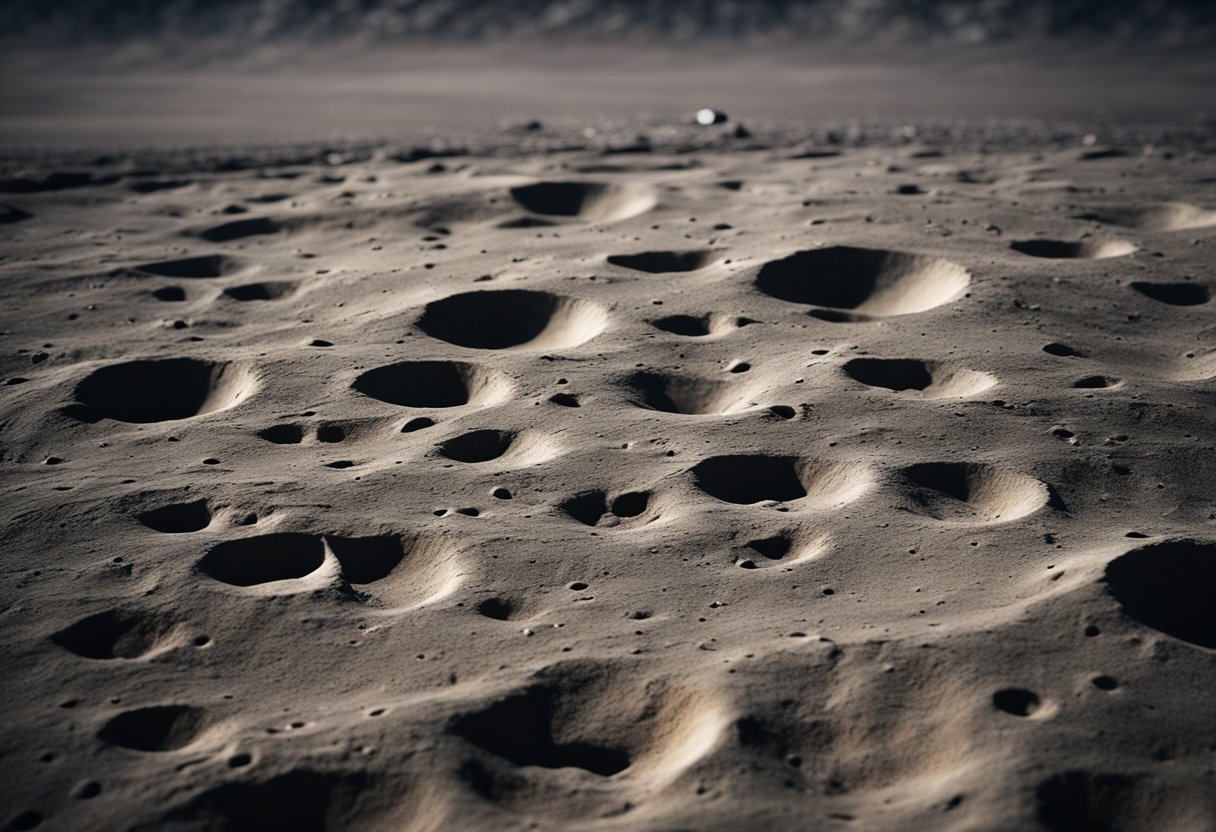
The preservation of Apollo landing sites presents a unique challenge and opportunity in the realm of heritage and space exploration. Our collective efforts to maintain the integrity of these sites are paramount, not only because of their significant place in history but also due to their potential to inspire future generations. As the locations of humankind’s first off-world footsteps, the Apollo sites are testimonies to the ingenuity and courage of astronauts like Neil Armstrong and Buzz Aldrin and the collective achievement of NASA and its Apollo missions. The surface of the Moon where Apollo 11 first made contact bears witness to this, and it remains a symbol of what we can achieve.
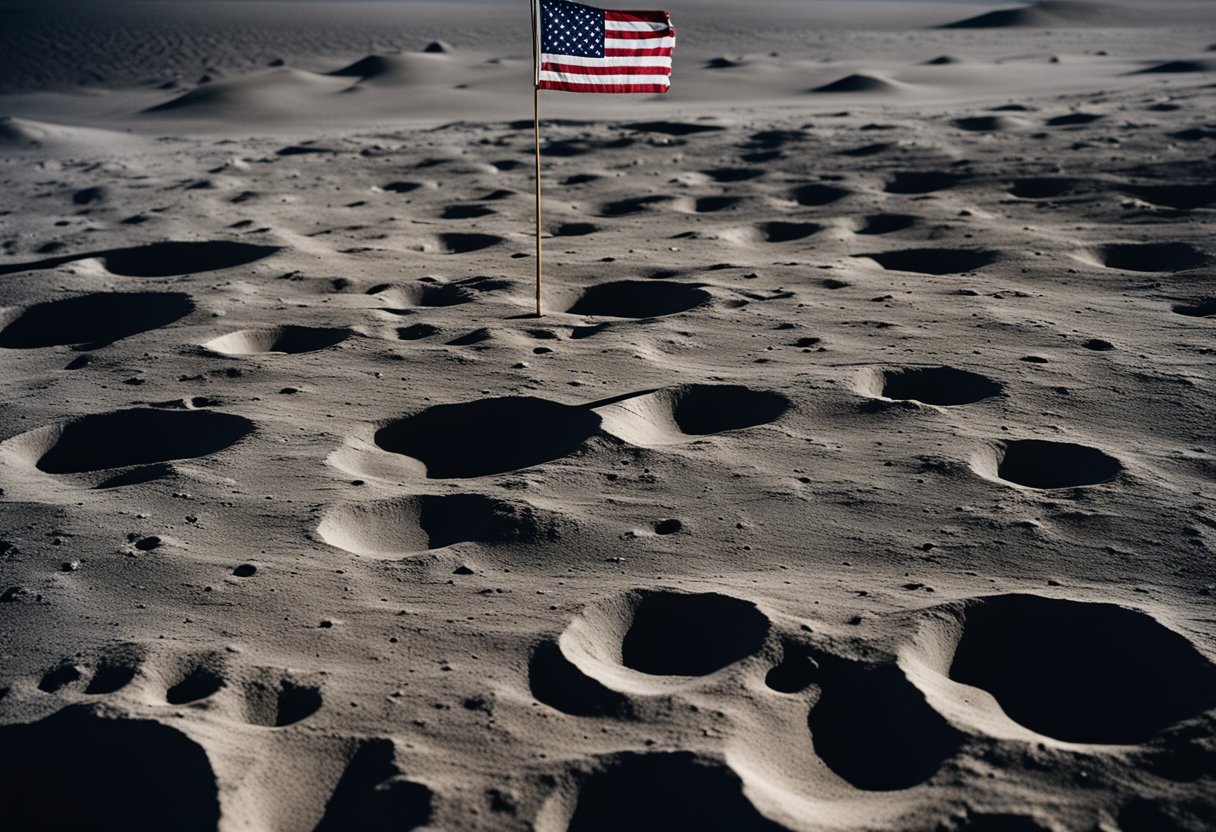
While the lunar surface has not been disturbed by Earth’s atmospheric and biological processes, human activities, particularly the potential for future missions and tourism, pose a risk to these untouched sites. As such, the establishment of legal frameworks and protective measures for the lunar sites is an ongoing discourse. Our understanding of archaeology and anthropology shapes our approach to these preservation efforts, with a focus on maintaining the artefacts and features of the Moon. The challenges are multifaceted, requiring international collaboration to address disputes and ensure the artefacts are safeguarded as part of our shared human heritage.
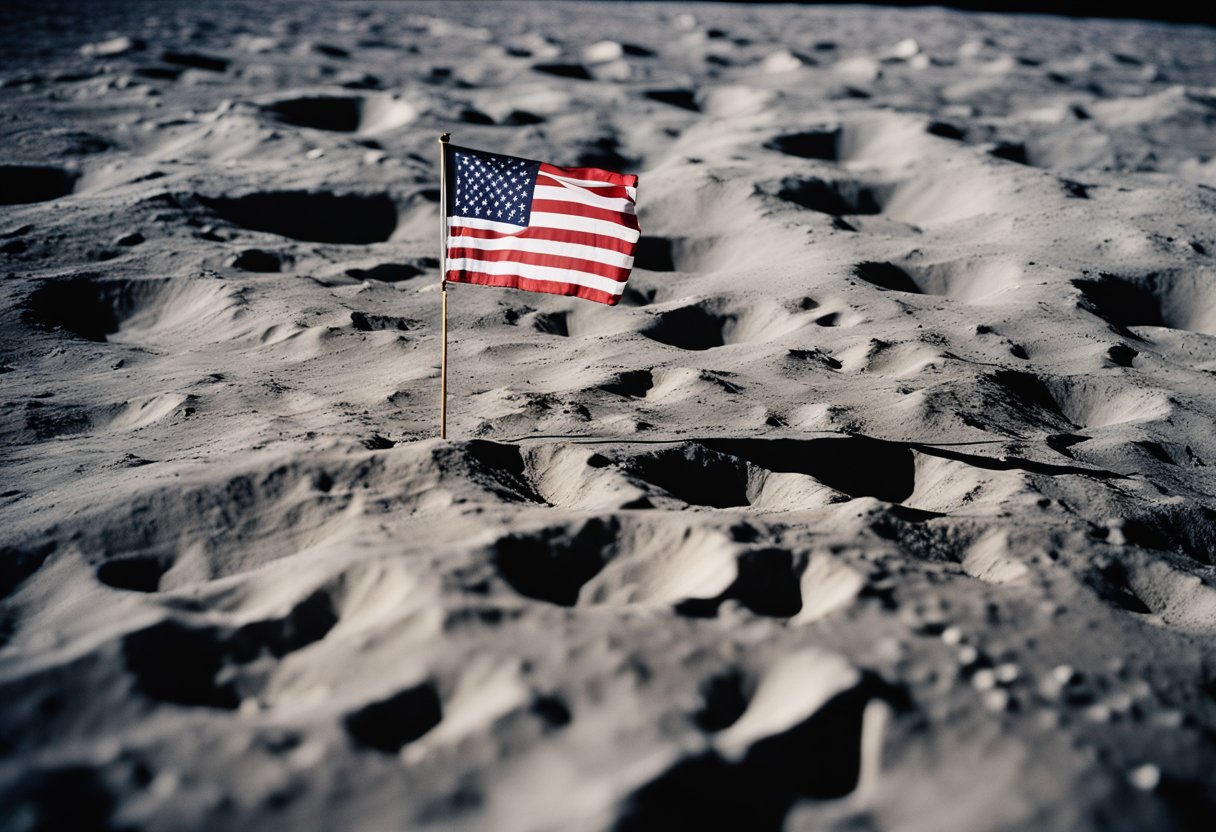
As we reflect on the monumental achievements in space exploration, it’s imperative to understand the historical importance of the Apollo lunar missions. These missions not only represented technological triumphs but also marked an indelible moment in human history.
The Apollo missions occurred during a period of intense Cold War competition between the United States and the Soviet Union. The space race was emblematic of the technological and ideological battle being waged on a global scale. Specifically, Apollo 11, carrying astronauts Neil Armstrong and Buzz Aldrin, achieved what had been a fanciful dream only a decade before – landing humans on the Moon and safely returning them to Earth.
On 20 July 1969, Neil Armstrong became the first human to set foot on the lunar surface, with Buzz Aldrin joining him some minutes later. Their moonwalk – broadcast on live television – captivated audiences around the world and culminated in the collection of lunar samples. The phrase “That’s one small step for [a] man, one giant leap for mankind,” uttered by Armstrong, underscored the significance of the event, as it highlighted the collective accomplishment of humankind.
The Apollo programme comprised a series of moon missions that expanded our knowledge of the Moon. Following Apollo 11, there were five more successful lunar landing missions, with Apollo 17 marking the last time humans visited the lunar surface. The historical sites left by these missions, such as the descent stages of lunar modules and tracks of lunar rovers, stand as silent testimonials to human ingenuity and curiosity.
Protecting these sites is crucial for preserving the legacy and artifacts of early space exploration, as discussed on SpaceVoyageVentures.com, which looks at the past achievements and the future potential of human space travel.
As enthusiasts of lunar exploration, we recognise the significance of cataloguing the locations where human beings first set foot on the Moon. Our efforts focus on two main approaches to pinpoint these historic sites.
The Lunar Reconnaissance Orbiter (LRO) has been instrumental in our quest to identify the precise locations of the Apollo landing sites on the Moon’s surface. Since its launch in 2009, it has collected a wealth of high-resolution imagery and data that allow us to spot the remnants of Apollo missions with remarkable clarity. For instance, the LRO’s images enable us to view the Sea of Tranquility, where Apollo 11 made history. These sites appear as disturbances on the lunar regolith, with left-behind descent stages and tracks from the astronaut’s exploration clearly visible.
In addition to the advanced capabilities of the LRO, recognising geographical features also plays a critical role. The landing site of the Apollo missions can often be distinguished by unique topographical characteristics. Take the Sea of Tranquility for example: not only notable as the site of the Apollo 11 landing but also identifiable by its relatively smooth mare basalt plains. Such geographical markers are essential reference points that guide us in confirming the exact locations of historical lunar activities.
In mapping these sites, we continue the legacy of human space exploration and preserve it for generations to come. Ongoing documentation, like that found on SpaceVoyageVentures.com, provides a glimpse into the marvels of past lunar missions and the potential of future space tourism endeavours.
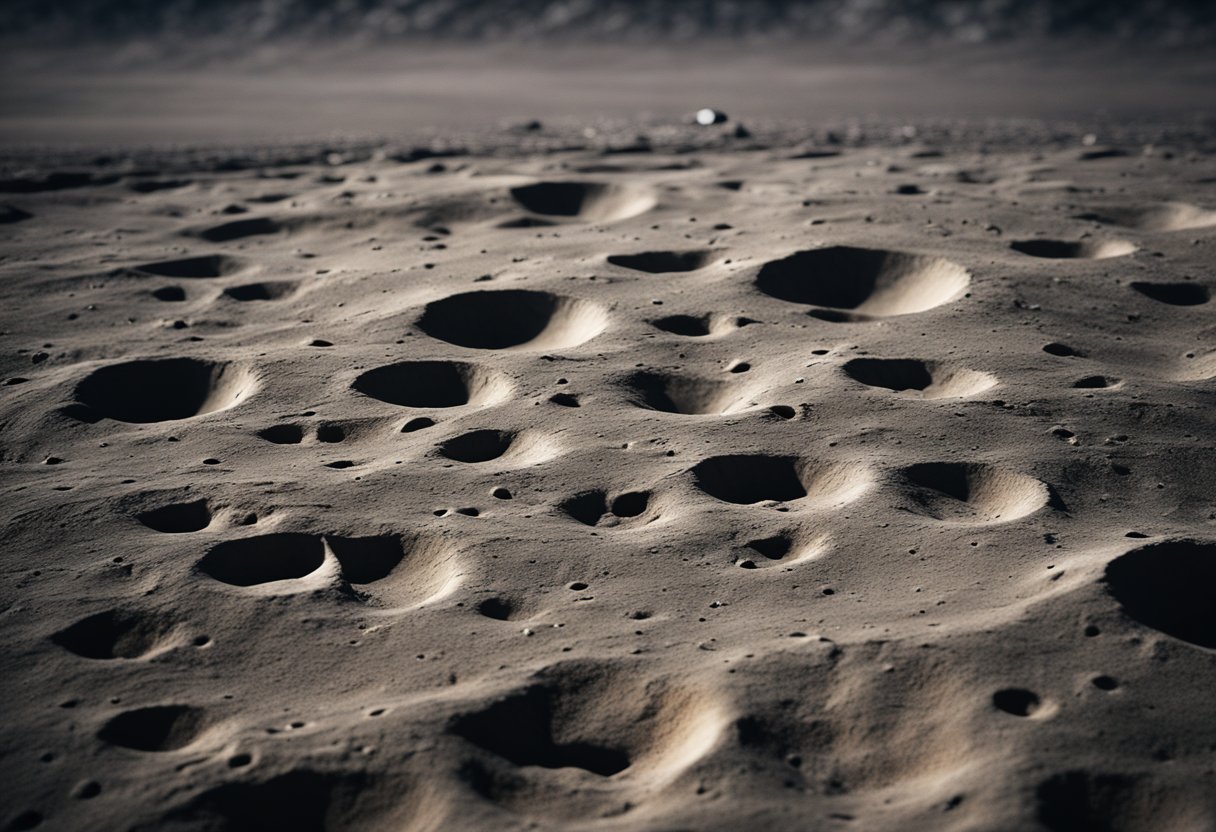
As custodians of space heritage, we recognise the significance of preserving the historical artefacts and features found on the Moon’s surface. These include the iconic Apollo mission remnants, such as the preserved footprints of astronauts, lunar rovers, and various tools and equipment left behind.
The first human footprints on the Moon were made by Neil Armstrong in 1969, and are one of the most enduring symbols of human exploration. The lack of atmosphere on the Moon means these footprints, alongside others made during subsequent Apollo missions, could remain unaltered for thousands of years. The footprints are not merely impressions in the lunar soil; they represent humanity’s capability to step beyond our home planet.
The Apollo missions introduced lunar rovers, also known as moon buggies, that greatly extended the range of astronauts on the lunar surface. Three rovers were left on the Moon by Apollo 15, 16, and 17 missions, providing profound insights into the Moon’s topology and geology. These rovers are still positioned there, almost frozen in time, bearing witness to mankind’s ingenuity.
A multitude of tools and equipment were utilised during the six Apollo missions that landed on the Moon. Items ranging from hammers and core tubes to the Apollo Lunar Surface Experiments Package (ALSEP) with various scientific instruments are scattered across the lunar landing sites. Additionally, the Apollo missions left behind retro-reflectors which are used for laser-ranging experiments to precisely measure the Earth-Moon distance.
These historic artefacts and features are not just remnants of past endeavours but are also valuable cultural sites that could potentially attract future lunar tourists. Companies such as SpaceVoyageVentures.com are already fostering a sense of anticipation for when visiting these sites goes from being a dream to reality. Preserving these lunar sites allows us all to share in the collective achievement and innovation that these missions represent.

In addressing the preservation of the Apollo landing sites, we focus on significant legislative efforts and international agreements. These encompass the Outer Space Treaty of 1967 and various U.S. legislative measures, reflecting our commitment to safeguarding these historic locations.
The 1967 Outer Space Treaty formed the basis of international space law. It was ratified by numerous countries, including the United States, setting forth the principle that the exploration and use of outer space shall be carried out for the benefit of all countries. Under this treaty, celestial bodies are not subject to national appropriation by sovereignty, use, occupation, or any other means. This agreement establishes a framework for all activities in space, including those related to the Apollo lunar landing sites.
Over the years, U.S. legislation has aimed at preserving the integrity of the Apollo landing sites. Notably, the “One Small Step to Protect Human Heritage in Space Act” contributes to these preservation efforts by requiring companies that are working with the National Aeronautics and Space Administration (NASA) on lunar missions to agree to be guided by NASA’s recommendations for avoiding harmful interference with Apollo missions’ artifacts. Even though the Apollo Lunar Landing Legacy Act, which proposed making Tranquillity Base a national park, was ultimately not passed, it underscores the will to protect these sites. Moreover, guidelines provided by NASA have formulated recommendations for the preservation of lunar historic sites, indicative of the commitment to maintain the scientific and historical value of these areas for future generations.
Our pursuit of preserving lunar heritage is matched by our interest in the ongoing developments of space tourism, where companies like SpaceVoyageVentures.com detail the burgeoning opportunities for public space travel, while also shedding light on the importance of preserving historical sites amidst this new frontier.
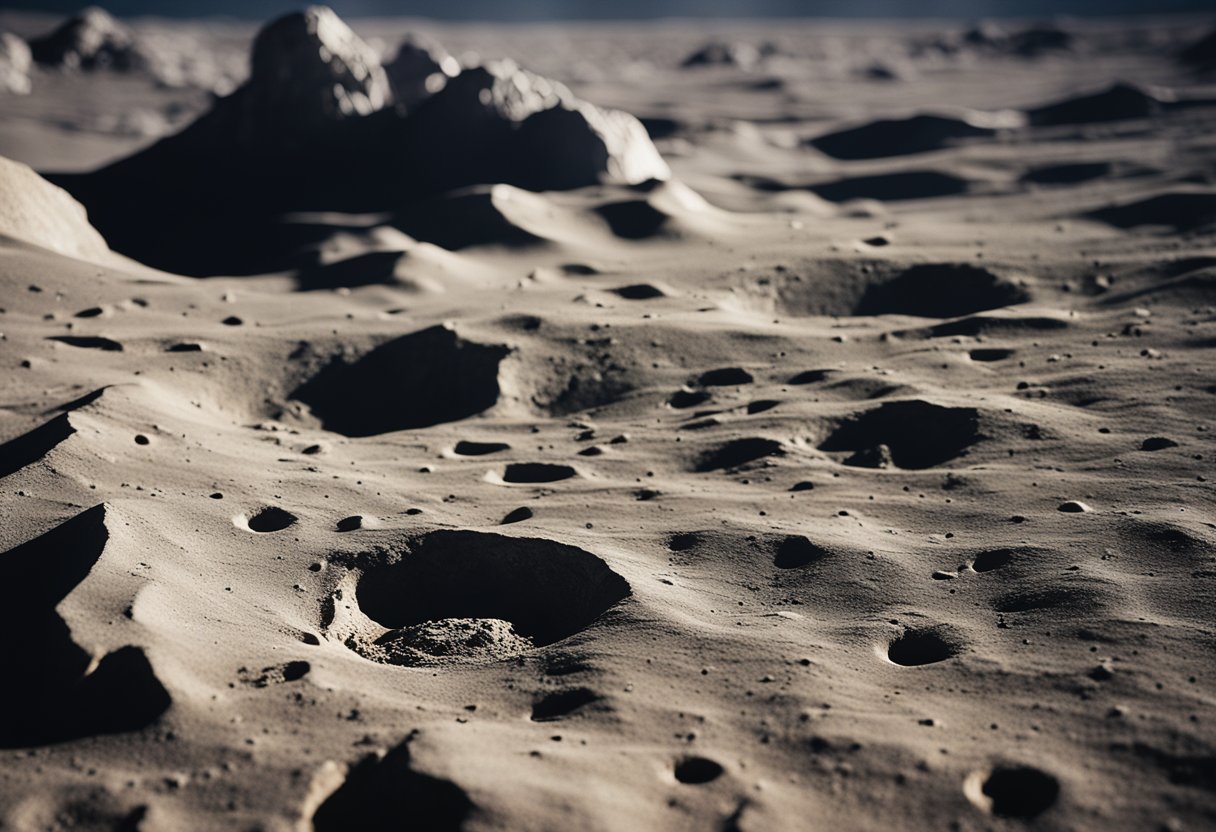
In our analysis of the Apollo landing sites, we recognise the integral role that archaeology and anthropology play in preserving these historic locales. These disciplines offer insights into the cultural and scientific significance of artefacts left on the moon’s surface.
The Apollo landing sites are of immense cultural and scientific value. Archaeology helps us to understand the human activities involved in space exploration by examining these sites. For example, the artefact boundaries at Tranquillity Base outline the extent of human presence and activities on the lunar surface. Anthropology complements this by exploring the broader cultural implications of human spaceflight. Beth O’Leary, an anthropology professor, has been a leading figure in advocating for the preservation of these sites. Through her work, we acknowledge that the material left behind by astronauts—ranging from the lunar module to footprints—is an indelible part of our shared human heritage.
The disciplinary approaches of archaeology and anthropology in the context of lunar preservation are multifaceted. Archaeologists focus on the meticulous documentation of artefacts and their spatial relationships to create comprehensive site maps. This documentation plays a crucial role in understanding the historical significance of the Apollo missions. Meanwhile, anthropologists study the impact that these artefacts have on shaping our societal narratives around space exploration. These efforts are critical, especially when new ventures, such as those outlined on SpaceVoyageVentures.com, seek to introduce the general public to space through tourism—raising concerns regarding the sites’ integrity. It is our responsibility to protect these sites, balancing the drive for further exploration with the preservation of our past achievements.
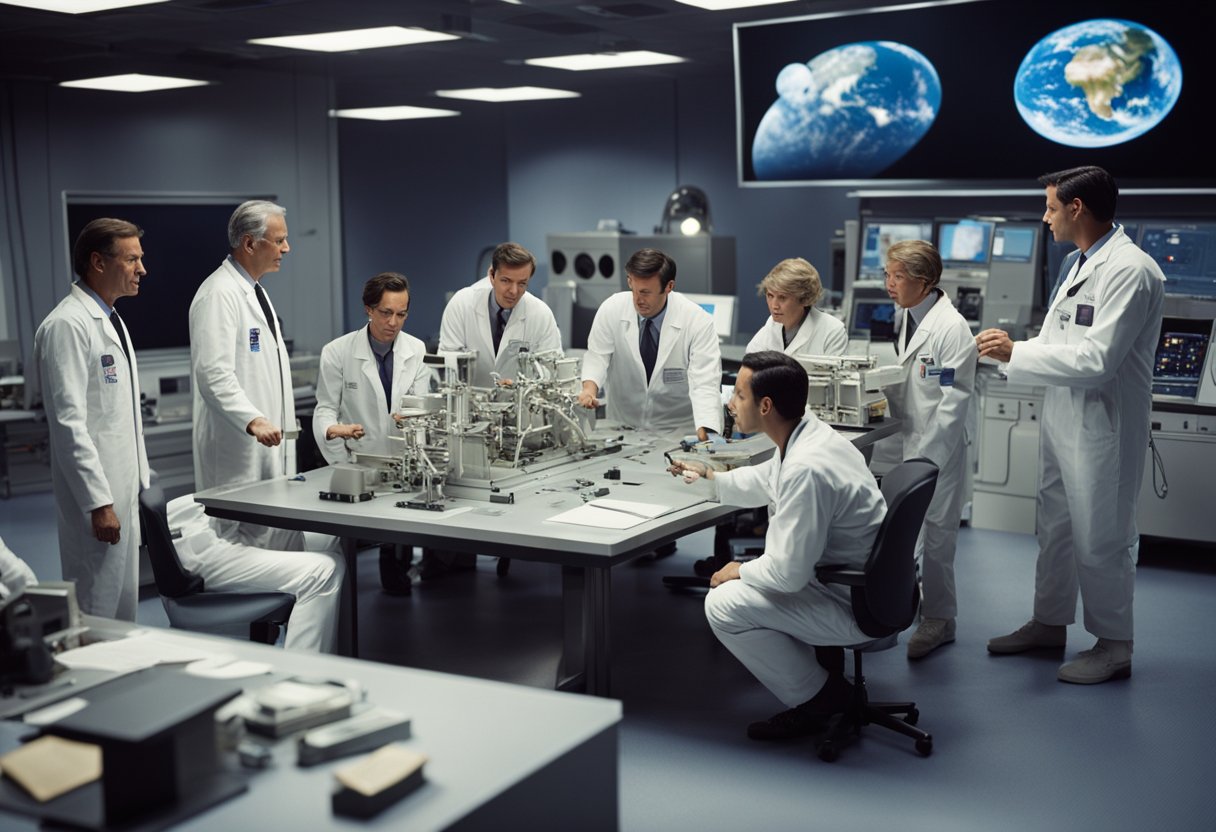
In navigating the sensitive topic of the preservation of Apollo landing sites, we encounter a complex web of multinational collaboration paired with diplomatic challenges. These elements underscore the intricate balance between commemoration of historical achievements and the ambitions of emerging space-faring nations.
Efforts to protect the Apollo landing sites require cooperation across borders. Traditionally strong space-faring nations like the United States and Russia have been joined by countries such as China and India, both of which have demonstrated significant advancements in lunar exploration. Japan has also expressed interest in participating in such preservation efforts. These countries often collaborate through various international forums, striving to establish agreements that honour historical artefacts on the moon while also considering the interests of all parties.
Despite aspirations for collective action, the protection of the Apollo sites is not without its diplomatic hurdles. Nations must navigate the geopolitical landscape where space ambitions can both align and conflict.
We observe a delicate tension between respecting historic achievements and cultivating an environment conducive to modern ambitions. It’s paramount that our strategies are framed within the context of existing treaties and the burgeoning interests of nations with lunar aspirations.
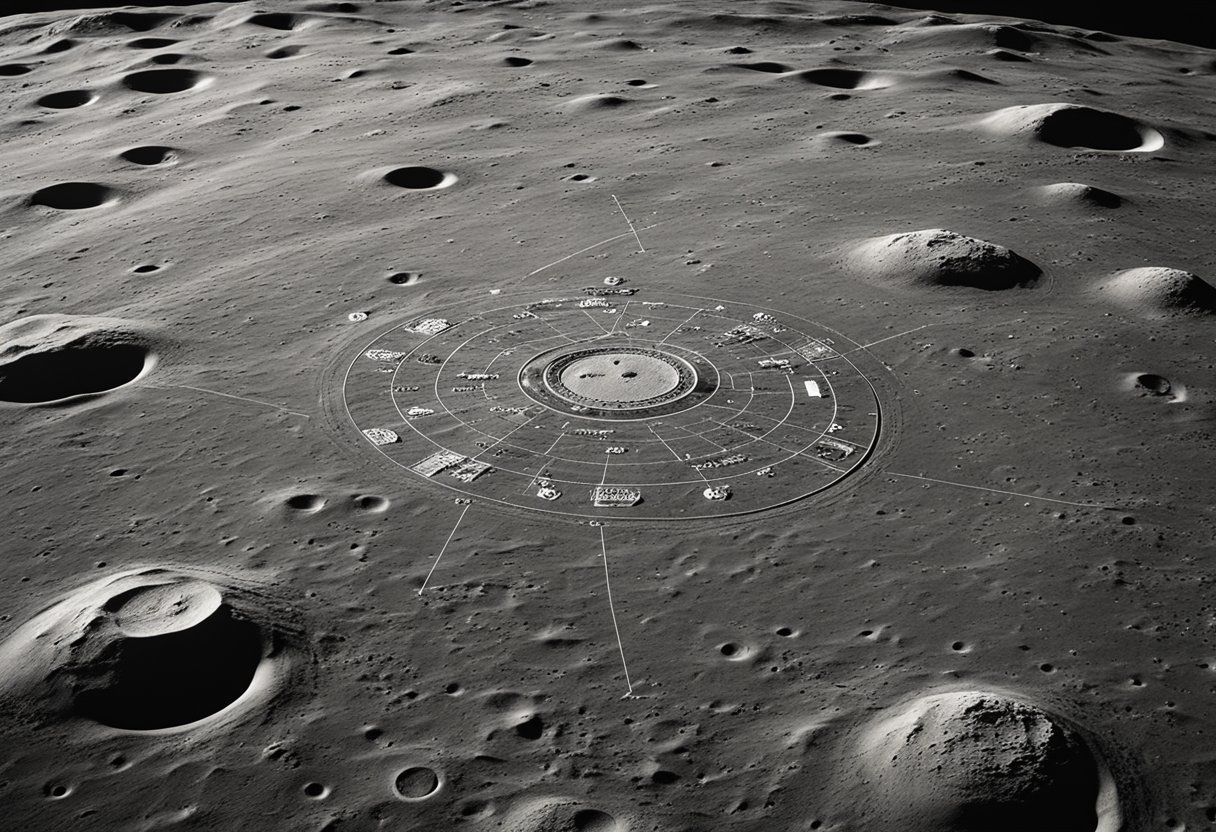
As we evaluate the protection of the Apollo landing sites, it’s crucial to consider the implementation of specific measures that are in place to preserve these historic locations. We’ll outline the established keep-out zones, the regulations on tangential fly-bys, and the guidelines being drafted for future tourism.
To minimise the risk of damage, areas surrounding the landing sites are designated as keep-out zones. These zones restrict both physical presence and activities within certain boundaries. For example, NASA has initiated guidelines to ensure that the Apollo 11 and Apollo 17 landing sites are encompassed by these protective boundaries.
Fly-bys in the vicinity of lunar sites must follow a tangential trajectory to avoid interfering with the site’s surface. Aerospace entities are obliged to maintain safe clearance during operations to prevent any accidental disturbances, such as the dispersion of lunar dust onto historical artefacts. These no-fly zones are formulated to provide a buffer to safeguard the integrity of the sites.
As space tourism evolves, with entities like SpaceVoyageVentures.com documenting prospective lunar excursions, we must establish a set of guidelines for visitors. It’s essential to strike a balance between facilitating tourism and preserving the historical value of these sites. The guidelines pertain to how tourists should approach the sites without causing harm and detail the behaviours expected of visitors, including respect for the keep-out zones and adherence to prescribed flight paths.
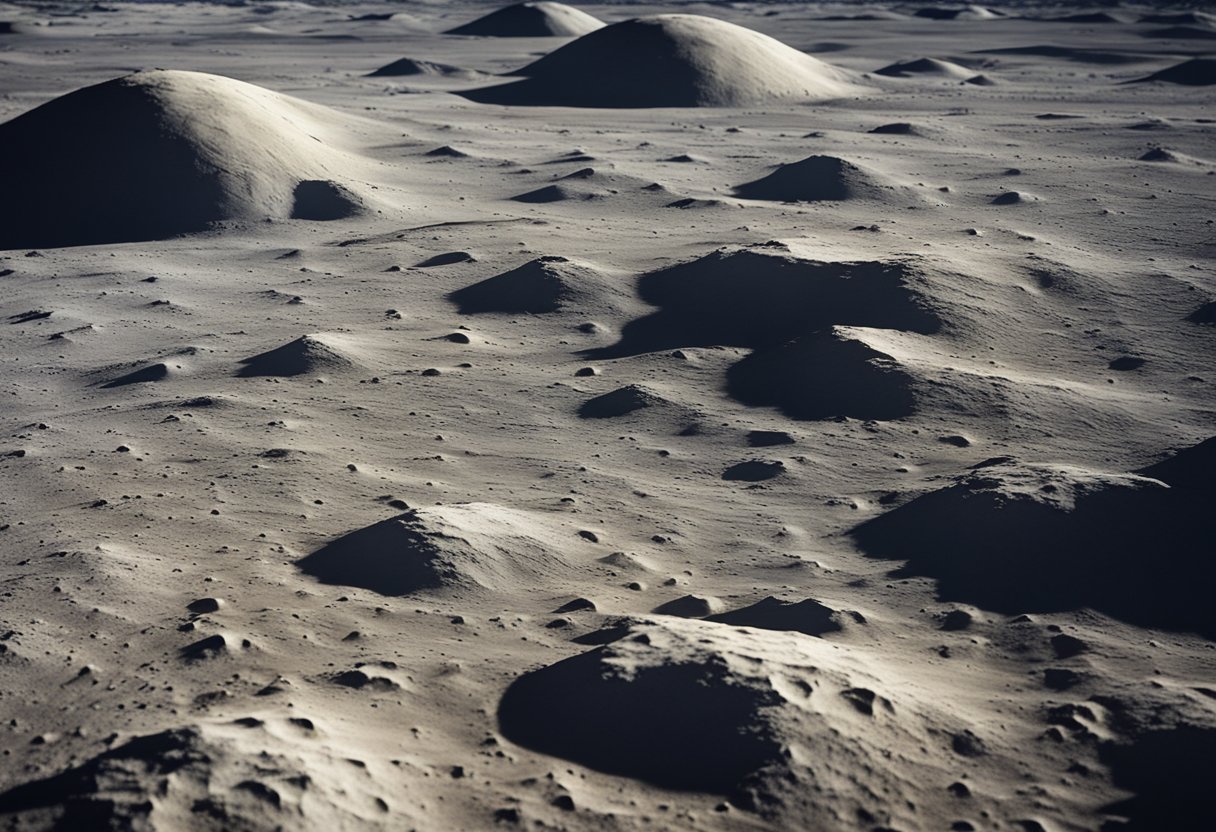
As we embark on an era where the moon becomes increasingly accessible, preserving our lunar heritage while preparing for future lunar landings becomes paramount. This balance is crucial for the integrity of past endeavours and for the blueprint of forthcoming missions in the space industry.
The legacy left by the Apollo 17 mission, the final manned landing on the moon, continues to inform and inspire current space endeavours. The challenges and triumphs experienced during the Apollo missions provide a framework for today’s lunar commercial services. The burgeoning moon rush reflects a revival of interest not just in scientific exploration but also in utilising the moon for economic benefits. As companies orchestrate future missions, the principles of heritage preservation guide their planning processes to avoid disturbing these historic sites.
With the sights set beyond our lunar companion, initiatives such as the Mission to Mars – My Vision for Space Exploration and Mars: Our Future on the Red Planet demonstrate a long-term vision for human space travel. These prospects pave the way for sustainable exploration and potential colonisation. However, to support these long-term goals, we must develop robust systems and protocols now. We’re looking at incorporating heritage protection into our mission designs, ensuring that the lunar surface can serve both as a portal to deeper space endeavours and a museum of humankind’s interstellar aspirations. Our work at SpaceVoyageVentures.com continues to document and advocate for responsible tourism options that honour the legacy while looking towards an expansive and inclusive space-faring future.
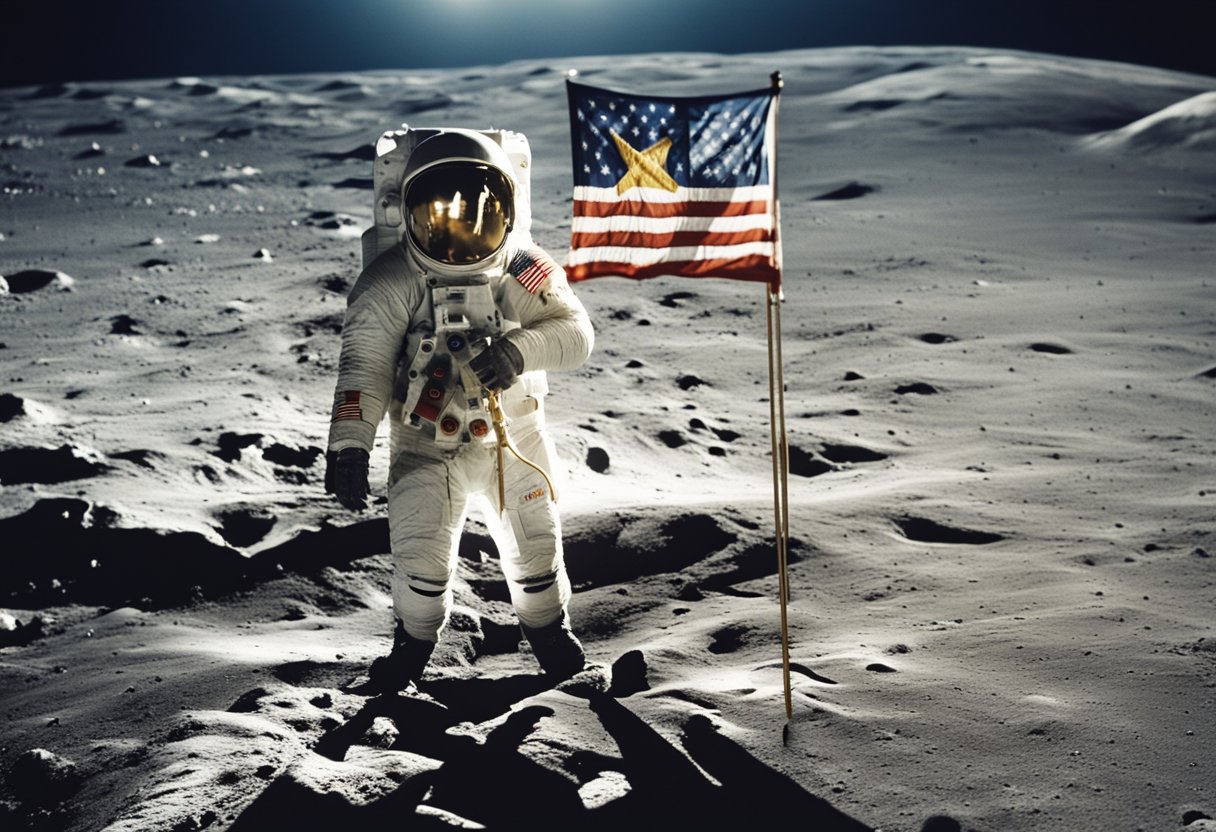
The preservation of Apollo landing sites holds significant educational and cultural value, establishing a direct connection with our spacefaring history and the era that defined a generation’s ambition.
We find that the Apollo landing sites have the unique capacity to engage the public in space exploration. By hosting space forums and commemorating past rocket launches, we reconnect the society with the pioneering spirit that once fueled the Apollo missions. The sites act as tangible touchstones for educational programmes, sparking discussions on everything from the physics of space travel to the cultural ramifications of landing on the Moon.
The artefacts and footprints left behind at these sites serve as powerful symbols central to inspiring future generations. They represent not just past achievements but also future possibilities. In education, teachers leverage the Apollo missions’ success stories, from design to landing, to inspire students in STEM fields. These narratives often coincide with skywatching events where the Moon becomes more than a celestial body—it’s a destination that we have reached and can aspire to visit again. Moreover, platforms like SpaceVoyageVentures.com stimulate the imagination of what lies ahead for lunar exploration and the possibility of participating in space tourism, underscoring the near reality of civilian engagement with the cosmos.
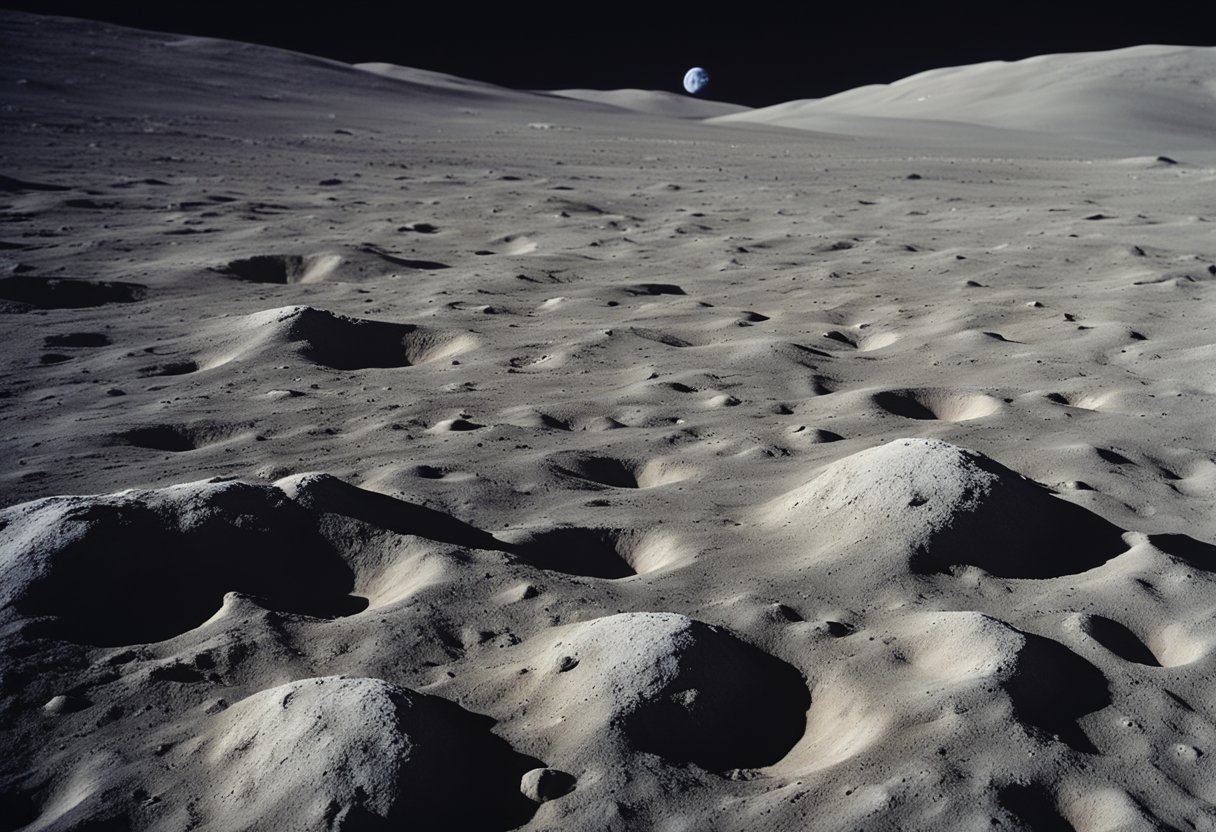
As we reflect on the achievements of lunar exploration, our efforts to recognise and commemorate these milestones become paramount. Heritage sites dedicated to the Apollo missions honour the historical significance of these achievements.
The Apollo Lunar Landing Sites have been designated heritage sites to honour human space exploration’s indelible mark. Efforts have been made to secure their status through proposals like establishing the Apollo Lunar Landing Sites National Historical Park to protect and maintain these sites for posterity. The conversation with UNESCO for recognising Apollo landing sites under the World Heritage Convention is ongoing, acknowledging the universal value of these areas of human achievement.
Awards such as the Ordway Award for achievement in spaceflight commend the bold steps taken during the Apollo missions. These accolades not only celebrate past triumphs but also encourage the ongoing preservation and appreciation of our shared space heritage. Moreover, sites like SpaceVoyageVentures.com play a role in fostering public interest and awareness of both historical space endeavours and the emerging prospects of space tourism.
Engagement with these commemorative practices and discussions ensures we maintain a living connection to our collective history as we chart our course for future celestial explorations.
We face several obstacles when it comes to preserving the historical sites of Apollo lunar landings. Ensuring these locations remain undisturbed for future generations is a complex task that involves environmental and commercial considerations.
The moon’s environment presents unique challenges. Without an atmosphere to shield against meteoroids and extreme temperature fluctuations, artefacts left on the lunar surface are at constant risk. The lack of atmospheric protection means that items such as the American flag, the robotic rover, and other equipment from the Apollo missions could degrade. Efforts like the lunar legacy project are critical in monitoring these sites to mitigate the effects of environmental threats.
The advent of private companies entering the space exploration arena brings forth the risk of commercial exploitation. Private teams might land near Apollo sites, potentially impacting their integrity. There’s an ongoing debate on how to best integrate a ‘national park system’ model to safeguard these historical sites. Protecting our space heritage necessitates clear guidelines that prevent disruption by any robotic rover or equipment that private entities might land there. SpaceVoyageVentures.com, for instance, represents the burgeoning interest in lunar exploration and tourism, which underscores the urgency in establishing robust preservation frameworks.
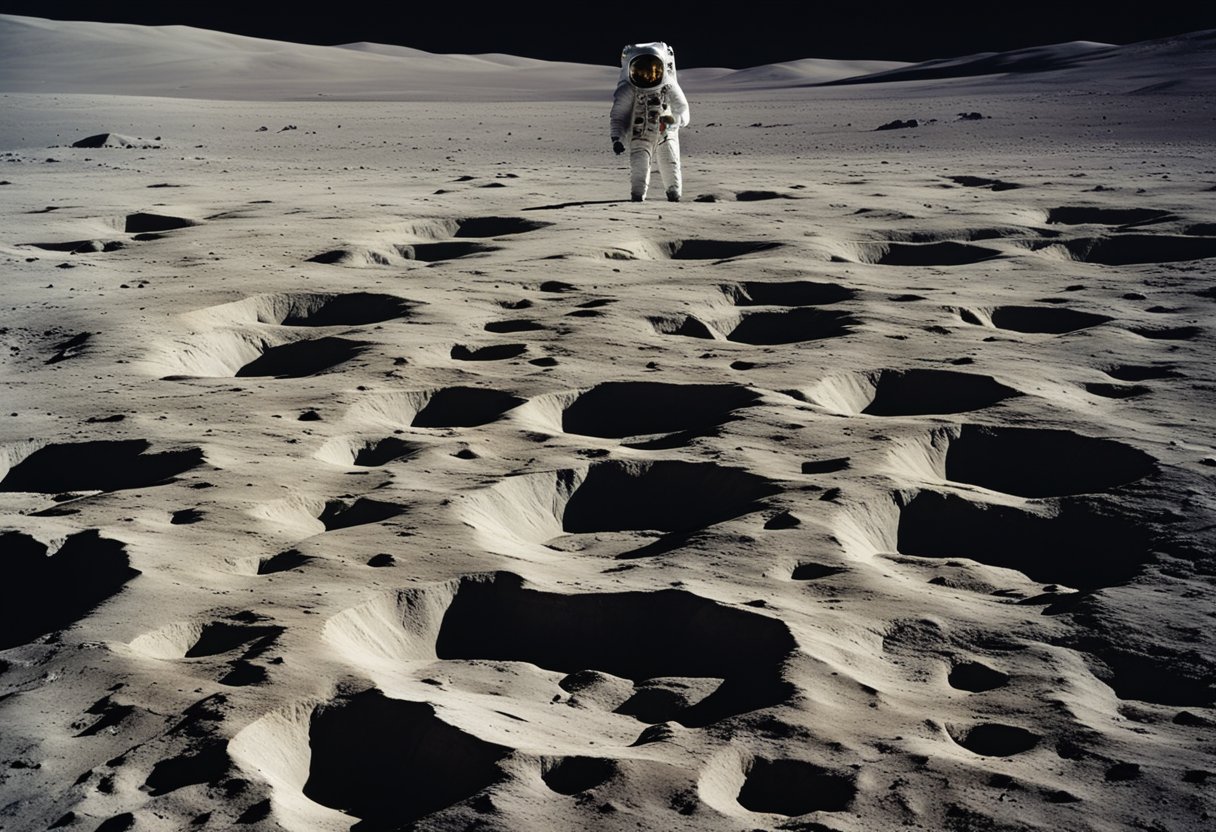
We have gathered some of the most common questions regarding the Apollo lunar landing sites and the efforts in place to ensure their protection for future generations.
Yes, several legal frameworks suggest protecting these historical sites. The U.S. government has issued guidelines for lunar mission artefacts, and international discourse continues to develop ways to legally shield these sites from potential damage.
The Apollo 11 landing site is relatively undisturbed since its creation. Artefacts and the flag planted remain in place, and even though they are exposed to the lunar environment, they appear to be mostly intact.
No, the footprints left by Apollo astronauts on the Moon cannot be observed with Earth-based telescopes. Even powerful telescopes like the Hubble Space Telescope lack the resolution to view such small details from the lunar surface.
The bootprints are expected to last for millions of years. There is no wind or water on the Moon to erode them, so their main threat is from future human activities or meteorite impacts.
NASA has published recommendations to other space-faring entities, and discussions are ongoing about internationally recognised agreements to safeguard the lunar historical artefacts reminiscent of early human space exploration.
The One Small Step Act reinforces American commitment to protecting human heritage in space by requiring all U.S. lunar missions to agree to guidelines that limit the disturbance of historic lunar landing sites, though it’s not enforceable on an international level.